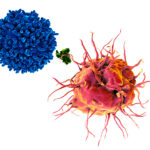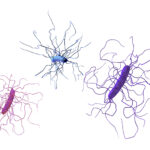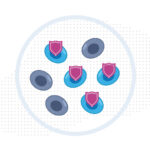After recovery from kidney cancer, Lia pays it forward
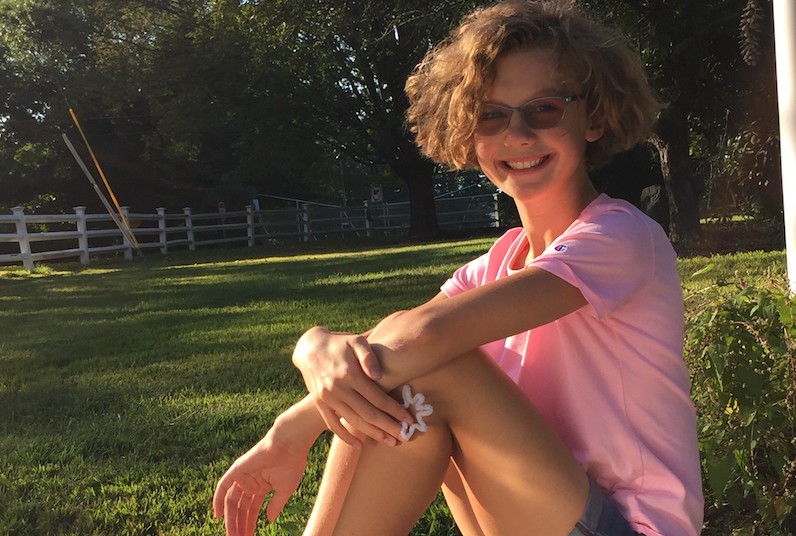
As a 3-year-old, Lia Scagnoli skipped across the “Bridge of Hope” connecting Boston Children’s Hospital and Dana-Farber Cancer Institute each time she had a chemotherapy infusion or other treatment for pediatric kidney cancer at Dana-Farber’s Jimmy Fund Clinic. Caregivers offering equal parts love, hope, and fun diversions gave her and her family a feeling of confidence that even the loss of her right kidney and long light-brown hair could not dissipate.
Today, Lia is a mature and insightful fifth grader, infused with empathy and wisdom well beyond her 10 years. She only remembers some of her cancer journey at Dana-Farber/Boston Children’s Cancer and Blood Disorders Center, but what she recalls above all else is the support she received along the way.
“Whenever I was nervous or crying because I didn’t want to do something, the doctors, nurses, and everyone in the clinic calmed me down,” says Lia. “They helped me take deep breaths, which really worked. It takes a lot to be patient, and they were super patient.”

One person who holds a special place in Lia’s heart is Martha Young. Among Young’s duties as program manager for patient and family education at Dana-Farber is making sure pediatric patients have fun in between their shots, check-ups, and infusions. There were plenty of crafts, games, books, and musical instruments to try, but Young’s support went beyond the walls of the clinic’s Betty Ann Blum and Marjorie Blum Pediatric Resource Room.
“Martha would distract me when I was scared by telling me stories or jokes,” says Lia. “She was always there for me, and for everybody in the clinic.”
That’s one of the reasons, says Lia’s mother, Tara, for all that skipping. People like Martha made the visits fun.
Tummy aches and tumors
Over Labor Day weekend of 2012, Lia’s illness started with what appeared to be the simplest of childhood ailments. Tara, a nurse, was out, and her husband, Peter, was home with Lia and their other daughter, Ava.
“Lia called out, ‘Daddy, I have a bellyache,’” recalls Peter. “I went up and rubbed her stomach to make her feel better.”
That’s when he found a bump on the right side of her stomach. Visits to Lia’s pediatrician and then Boston Children’s quickly led to a diagnosis of a stage I Wilms tumor – the most common type of pediatric kidney tumor. “We felt lucky to be so close from Dana-Farber/Boston Children’s,” says Peter. “We saw kids there from all over the world, but it was just a 45-minute drive for us.”
Peter and Tara met the entire team assigned to Lia’s care, including surgeon Dr. Christopher Weldon and pediatric oncologist Dr. Lisa Diller, as well as pediatric oncology fellow Dr. Natasha Frederick. Usually found in children five and younger, Wilms is treated first with surgery to remove as much of the tumor as possible, along with the diseased kidney.
“The day of the surgery we were very frightened, of course,” says Tara. “Peter and I were sitting by Lia’s bedside, and when Dr. Weldon came in, Peter stood up to offer his chair. Dr. Weldon said, ‘No, no, you sit,’ and then bent down to talk to Lia and to us. It was such a special thing to do.”
That type of warmth, Tara says, followed the family throughout Lia’s 19 weeks of chemotherapy and related treatment in the Jimmy Fund Clinic.
“Both the inpatient and outpatient staff had a special way of communicating with these kids that are going through so much,” says Tara. “They made them feel comfortable and at ease, and we were so grateful for that.”
The warmth, Dr. Diller recalls, came from all directions.
“Lia and her family were always finding a way to make the visits fun,” says Dr. Diller. “I remember often having to play ‘Find Lia’ on my visit because she found unexpected hiding places in a little exam room before I came in. Her giggles gave her away.”
A cut above
Today Lia no longer needs to make regular trips to Dana-Farber/Boston Children’s. She has “graduated” to annual check-ups with pediatric nurse practitioner Eileen Duffey-Lind and other staff at the David B. Perini Jr. Quality of Life Clinic, which provides survivors of childhood cancer with care and support as they manage issues related to survivorship.
“Over the past decades, pediatric oncology clinical trials here and nationally have shown us that for many early-stage Wilms patients, like Lia, we can avoid very toxic chemotherapy and cure more than 90 percent,” says Dr. Diller, medical director of the Perini Quality of Life Clinic. “Lia should have no significant long-term side effects of her chemotherapy, and is cured of her cancer, but Wilms treatment almost always involves taking out a kidney. We focus on keeping that remaining kidney healthy through good nutrition, drinking lots of fluids, and making sure every patient has normal blood pressure.”
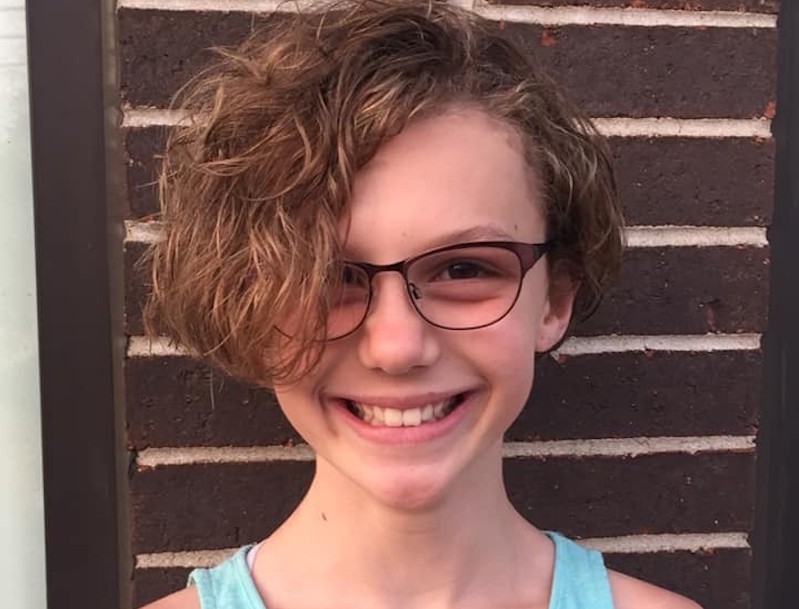
Lia’s visits with her buddy Martha Young are now usually reserved for fun events like the Jimmy Fund Clinic Summer Festival. At this year’s festival in late July, Lia debuted a new look; earlier that month, she had most of her long hair cut off and donated to Wigs for Kids, an organization that helps children dealing with hair loss due to medical conditions and treatment.
Young was not surprised.
“When patients receive a wig from Lia’s hair, they will wear it knowing that it came from someone who knows what it’s like to walk in their shoes,” says Young. “What a gift Lia is, and she just keeps on giving.”
Learn more about Wilms tumor.
Related Posts :
-

Exposing a tumor’s antigens to enhance immunotherapy
Successful immunotherapy for cancer involves activating a person’s own T cells to attack the tumor. But some tumors have ...
-

Combining CAR-T cells and inhibitor drugs for high-risk neuroblastoma
Chimeric antigen receptor (CAR)-T cell therapy is a potent emerging weapon against cancer, altering patients’ T cells so they ...
-

Could a GI bug’s toxin curb hard-to-treat breast cancer?
Clostridium difficile can cause devastating inflammatory gastrointestinal infections, with much of the damage inflicted by a toxin the bug produces. ...
-

Making immunotherapy safe for AML
Acute myeloid leukemia (AML), the second most common leukemia in children, is hard to treat and has a five-year survival ...


